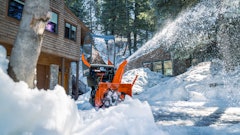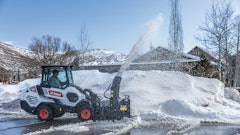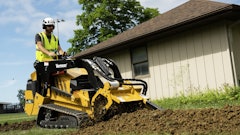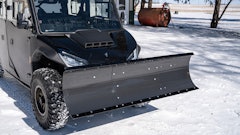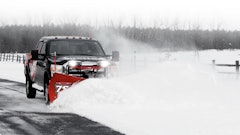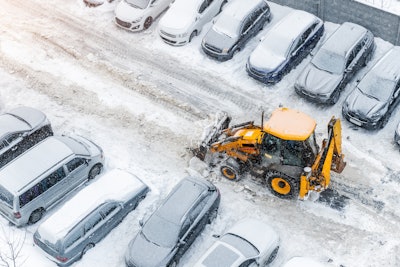
As a landscape contractor, you probably have a growth mindset. You’ve built your company via hard work, investment and word of mouth. You probably have a growing list of clients that are delighted with your work and as you know that list is invaluable.
That list represents a potentially significant opportunity for you to expand your portfolio of services into other areas and/or seasons. Imagine being able to quickly add profit to your bottom line simply by investing in a few pieces of equipment and marketing your new services to your existing clients. They already trust your work and selling them more services from your company would be very easy.
One category of work to seriously consider is snow and ice control. You likely already have fleet trucks that you’ve invested in that could carry the workload and by extending their utility into another season, your vehicle investment pays off even faster.
How to start your entrance into snow and ice
Most ¾-ton trucks can handle a snow plow. To start, consider purchasing a simple straight-blade plow. They are less expensive than a v plow, and for most situations, they perform adequately. The plow’s controller is simple to master and you, and perhaps your crew will be able to operate it within minutes. You’re making money already.
Another tip to consider for your entrance into snow and ice work is to purchase a used plow. The mild winter that occurred last year has led to a market full of gently used equipment. With a lower cost of entry, your path to profitability is even shorter. Whether you decide to go new or used, contact a local snow plow dealer to discuss your options and take care of the installation work. Note: your choice of brand of plow is a personal choice. Start by establishing a good relationship with a local dealer, maybe even the same dealer you buy your lawn equipment from during the spring. They’ll have the expertise to guide you and provide you with service and parts if you need them.
The other category of snow and ice work is ice control. It’s more profitable than plowing because there are roughly six salting/brining events for every plowing event. The margins on the materials are good and salt is easy to source. With a salter/briner on the back of your vehicle, you can stack your available services, allowing you to potentially double your revenue on every trip.
Like plows, there are several options available to get you started. Spreaders range from tailgate mounted models that just slide in and out your receiver hitch all the way up to a slide-in or v-box model that slides into the bed of your truck. The big differences between the two types are price and capacity to hold salt. Both are operated by an in-cab controller, and both are relatively easy to remove at the end of the season.
Another emerging tactic for ice control is liquid or brine application. Brine is simply a mixture of salt and water which when mixed at the right ratio provides a liquid that stops snow and ice from bonding to the pavement. This has several benefits to you as a contractor:
1. Brine provides the same area coverage as salt with one-third the amount of salt.
2. Brine does not harm grass and has significantly less impact on local resources like ground water and streams.
3. Better profit margin: again, you’re selling the service of ice control and get all the same benefits of using rock salt, but use one-third of the material.
There are several ways to source brine. You can mix your own using the brine makers offered by the leading brands in snow and ice, or you can source it from someone that is making the brine and selling it. There are a number of great resources to teach you about brine, including a growing library of brine education at bossplow.com.
Like salt spreaders, there are number of models of brine sprayers available to spread brine with your vehicle. They range in size generally by liquid holding capacity. A 300-gallon sprayer is perfect for a ¾-ton truck, and there are several brands that offer them.
Another equipment option, a quickly growing one, is the sidewalk vehicle. These vehicles are like a mini skid but excel at snow and ice removal on sidewalks. They feature a tool carrier system that allows for different attachments to be quickly mounted and dismounted depending on the work that is to be done. Most feature zero-turn operation, and some have full-time four-wheel drive. What makes these machines an interesting and attractive option? Flexibility.
The leading brands of sidewalk machines offer attachments that are snow purposed and increasingly, multiseason capable. You can outfit them with a snow plow, a snow thrower, a spreader or a liquid sprayer and can complete the process of snow removal and ice control all in one pass simultaneously.
Now add to the productivity of these machines are the availability of attachments like a broom. The brooms can handle snow removal for 5 inches or less of snow and excel at sweeping pavement of debris like sand and dirt. Just like that, you’ve added another service for off-season work: pavement sweeping. Some even offer mower attachments for green work, meaning these machines will make you money all year long. Look for attachments in this category of machines to keep expanding.
Consider this: one of these sidewalk vehicles with a plow and spreader can do a driveway in five to 10 minutes. To capitalize on this, contract with several clients in a neighborhood and set up a route(s). Put the sidewalk vehicle on your trailer and do four to five driveways and sidewalks in an hour. You’ll be able to transport it just like your zero-turn mower.
Snow and ice control is something you should seriously consider adding to your services portfolio. Start small with investment and property coverages until you get a handle on the logistics involved. Then, just like you’ve done on the green side, expand your footprint when you are comfortable doing so.
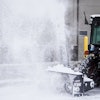

![Doosan Bobcat Wacker Neuson Stack 2ec Js Pb V6e[1]](https://img.greenindustrypros.com/mindful/acbm/workspaces/default/uploads/2025/12/doosan-bobcat-wacker-neuson-stack2ecjspbv6e1.CPyyz8ubHn.png?auto=format%2Ccompress&bg=fff&fill-color=fff&fit=fill&h=100&q=70&w=100)
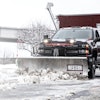
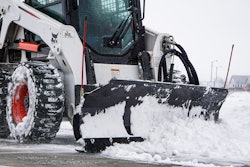
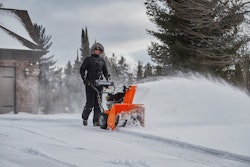
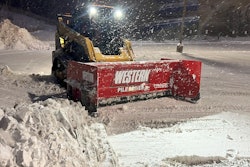
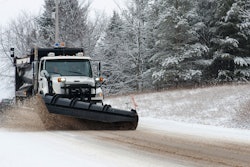
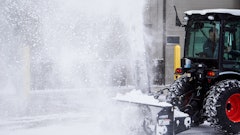
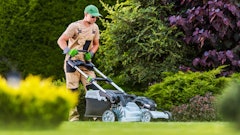
![Doosan Bobcat Wacker Neuson Stack 2ec Js Pb V6e[1]](https://img.greenindustrypros.com/mindful/acbm/workspaces/default/uploads/2025/12/doosan-bobcat-wacker-neuson-stack2ecjspbv6e1.CPyyz8ubHn.png?ar=16%3A9&auto=format%2Ccompress&bg=fff&fill-color=fff&fit=fill&h=135&q=70&w=240)
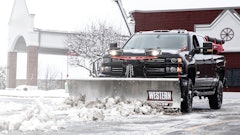
![Gravely Pro Turn Mach One My23 Dsc03139 Edit 1200x800 5b2df79[1]](https://img.greenindustrypros.com/mindful/acbm/workspaces/default/uploads/2025/10/gravely-pro-turn-mach-one-my23-dsc03139-edit-1200x800-5b2df791.BucBnDoN22.jpg?ar=16%3A9&auto=format%2Ccompress&fit=crop&h=135&q=70&w=240)
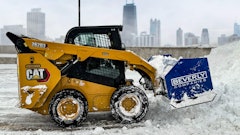
![Kubota Snow ah3 Sgv25ua[1]](https://img.greenindustrypros.com/mindful/acbm/workspaces/default/uploads/2025/10/kubota-snowah3sgv25ua1.bAUoUSziui.png?ar=16%3A9&auto=format%2Ccompress&bg=fff&fill-color=fff&fit=fill&h=135&q=70&w=240)
